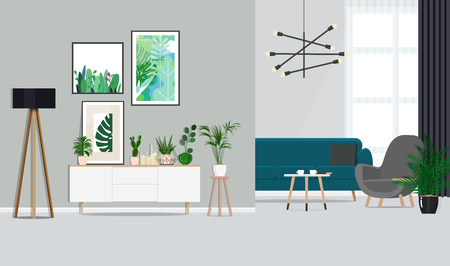Introduction: The Importance of Wellbeing in the Built Environment
In the UK, the design of our homes, workplaces, and public buildings plays a crucial role in supporting health and wellbeing. Whether nestled in the rolling countryside or situated amid the bustle of an urban centre, our built environments profoundly affect our daily lives. British values have long emphasised comfort, connection to nature, and a sense of belonging within our communities, making it essential that both rural and urban spaces are designed with occupant wellbeing at their core. Recent guidelines such as the Building Regulations Approved Document O and the UK Green Building Councils Health and Wellbeing Framework reinforce the importance of daylight access, views to the outside, and appropriate window treatments. These measures are not just about meeting minimum standards—they reflect a growing recognition that thoughtful building design can reduce stress, improve mood, and promote healthier lifestyles across all regions of Britain. In this article, we will explore how specific design considerations—particularly those related to light, view, and window solutions—can be tailored to enhance wellbeing in both rural villages and busy cities across the country.
2. Natural Light: Maximising Daylight Exposure
Access to natural light is a key factor in promoting wellbeing, yet the approach to daylight exposure varies significantly between rural cottages and urban flats across Britain. The differences are rooted in local planning regulations, typical building orientations, and climate-responsive daylighting strategies designed specifically for the UK’s often overcast conditions.
Planning Regulations and Building Constraints
In rural settings, planning regulations tend to be less restrictive when compared to urban areas. Rural cottages often have more flexibility regarding window size and placement, allowing for larger openings that maximise sunlight penetration. Conversely, urban flats must comply with stricter building codes due to density and privacy concerns, leading to smaller windows or restrictions on certain orientations, especially in conservation areas or listed buildings.
Typical Building Orientations
| Aspect | Rural Cottages | Urban Flats |
|---|---|---|
| Common Orientation | South-facing for optimal sun | Varies; often east/west due to street grid |
| Window Size | Larger, fewer constraints | Smaller, regulated by planning laws |
| Neighbour Proximity | Distant neighbours allow unobstructed views | Close proximity limits direct light access |
Daylighting Strategies Tailored to the UK Climate
The UKs variable weather necessitates specific daylighting solutions. In rural homes, deep window reveals and rooflights are common features that capture low-angle winter sun while minimising glare in summer. Urban dwellings may employ light wells, clerestory windows, or reflective interior finishes to bounce available light deeper into rooms. Both contexts utilise double-glazing and draught-proofing to balance daylight access with energy efficiency during cooler months.
Summary of Approaches
- Rural: Larger windows, flexible orientation, prioritising open views and sunlight penetration.
- Urban: Smaller apertures, strategic use of reflective materials, innovative layouts to combat overshadowing from adjacent structures.
This nuanced approach ensures that both rural and urban British homes can harness as much natural light as possible—supporting occupant wellbeing while respecting local character and regulatory frameworks.

3. View Quality: Connecting with Surroundings
In the British context, the quality of views from a window holds substantial psychological and restorative value, whether overlooking a rolling rural landscape or a vibrant urban streetscape. Research consistently highlights that connection to ones surroundings—be it green fields, gardens, or even lively city scenes—can uplift mood, reduce stress, and foster wellbeing. In rural Britain, windows often frame expansive vistas of countryside: hedgerows, woodlands, or distant hills. These natural panoramas are proven to encourage relaxation and mental recovery, tapping into our innate biophilia—the human affinity for nature. Design choices in these settings should maximise unobstructed sightlines and avoid cluttering sills or window frames. The placement and size of windows matter greatly; floor-to-ceiling glazing or deep bays can draw the outside in, making seasonal changes part of the interior experience.
Conversely, in British urban environments—from London terraces to Manchester flats—the view may encompass architectural landmarks, bustling streets, or communal green spaces like local parks and squares. While not always natural, these scenes also offer restorative benefits. Observing everyday city life fosters a sense of connection and belonging within a community, which is vital for urban dwellers who may lack private gardens. Smart design can enhance these urban views by framing key features: positioning seating areas to overlook courtyards or street trees, using Juliet balconies for fresh air access, or integrating angled glazing to capture morning sun and city rhythm.
Whether in the countryside or city centre, window treatments play a crucial role in mediating this connection. Sheer voiles allow soft light while maintaining privacy in dense neighbourhoods; layered curtains or classic wooden shutters give flexibility to reveal or obscure views as desired. Ultimately, thoughtful design recognises the psychological importance of both nature and urban vibrancy—crafting windows that do more than illuminate interiors but truly connect occupants to their unique British surroundings.
4. Window Treatments: Balancing Privacy, Comfort, and Tradition
Window treatments in Britain are far more than decorative choices; they reflect local traditions, lifestyle needs, and environmental considerations. The rural-urban divide significantly influences the selection of window dressings, with each setting prioritising privacy, energy efficiency, and cultural preferences in distinct ways.
Popular Window Dressing Choices
| Type | Rural Preferences | Urban Preferences | Key Features |
|---|---|---|---|
| Net Curtains | Common for maintaining modesty while letting in daylight, often seen in cottage-style homes. | Widely used in terraced houses and flats to provide privacy from close neighbours without blocking light. | Sheer fabric, diffuses light, traditional British touch. |
| Plantation Shutters | Increasingly popular in converted barns and period properties for their rustic charm and control over light/airflow. | Sought after in urban renovations for a stylish look and enhanced security. | Adjustable slats, solid construction, effective insulation. |
| Thermal Blinds | Valued in older properties where heat loss is a concern; helps keep interiors warm during cold months. | Favoured in energy-conscious new builds or retrofits for reducing heating bills and boosting comfort. | Multi-layered fabric, blocks drafts, enhances energy efficiency. |
Privacy Needs: Contrasting Contexts
Rural Homes: With greater distance between neighbours, rural dwellers may opt for lighter treatments—like lace curtains or minimal blinds—to maximise views of the countryside. However, tradition still plays a part; net curtains remain popular not just for privacy but as a nod to British heritage.
Urban Settings: In densely populated areas, privacy is paramount. Residents often combine net curtains with blackout blinds or shutters to protect against street-level visibility. Layering treatments allows control over both daylight and seclusion without sacrificing style.
Cultural Preferences and Energy Efficiency
The British climate encourages solutions that balance daylight with thermal performance. While rural homeowners may focus on preserving character (using wooden shutters or classic drapes), urban residents tend towards sleek blinds or contemporary shutters for practicality and aesthetic appeal. Both groups increasingly value thermal blinds due to rising energy costs and sustainability awareness.
Aesthetic Integration with Local Traditions
The choice of window dressing also reflects regional architectural styles. For example, sash windows in Georgian homes are frequently paired with cafe-style nets or tier-on-tier shutters. Meanwhile, modern city flats might favour minimalist roller blinds to suit compact spaces.
Ultimately, whether in the heart of the countryside or amid city bustle, window treatments in Britain serve as an intersection of comfort, privacy, and tradition—each tailored to fit the unique rhythms and requirements of their setting.
5. Challenges and Maintenance Considerations
When designing for wellbeing in both rural and urban British contexts, it’s crucial to address the unique challenges each environment presents—especially when it comes to window treatments, light, and views. The practical aspects of maintenance not only ensure long-term durability but also support health and comfort year-round.
Condensation Control in Rural Stone Cottages
Older stone cottages, common throughout the British countryside, often grapple with condensation issues due to thick walls, single glazing, and limited ventilation. Persistent moisture can lead to mould growth, damaged timber frames, and a decline in indoor air quality—directly impacting occupant wellbeing.
Practical Tips for Cottages
- Ventilation: Regularly open windows or use trickle vents to promote airflow, particularly in kitchens and bathrooms.
- Draught-proofing: Install draught excluders around sashes and doors while ensuring there’s still some natural air exchange.
- Secondary Glazing: Fit discreet secondary glazing to reduce heat loss and condensation without spoiling historic character.
- Routine Inspection: Check window frames for signs of rot or damp every season; promptly treat any issues with suitable wood preservative or masonry sealant.
Window Maintenance in High-Rise Urban Developments
In cities like London or Manchester, high-rise flats present their own set of window-related challenges. Cleaning exterior glass at height is not only tricky but sometimes dangerous without specialist equipment. Meanwhile, sealed double or triple glazing units require periodic inspection to maintain thermal performance and prevent misting between panes.
Urban Upkeep Solutions
- Professional Cleaning: Schedule regular cleans with accredited window cleaning services equipped for multi-storey access.
- Check Seals: Inspect rubber gaskets and seals annually; replace if cracked or perished to avoid draughts and leaks.
- Treat Blinds & Curtains: Choose easy-clean materials for window treatments, and launder or wipe down at least twice a year to minimise dust build-up—a key factor for residents with allergies.
- Report Issues Promptly: In managed blocks, notify property management early about any blown glazing units or faulty mechanisms to prevent bigger problems later on.
Long-Term Durability: A Preventive Approach
No matter the setting, preventive maintenance is always preferable—and more cost-effective—than reactive repairs. Establish a simple schedule for checking all accessible windows and treatments as part of your seasonal home care routine. Not only does this preserve your property’s value, but it also ensures that your living environment consistently supports health, comfort, and wellbeing—whether you’re gazing over rolling fields or bustling city streets.
6. Recommendations for Designers and Homeowners
Consider Local Context and Light Quality
For both rural and urban British homes, begin by assessing the unique light quality and orientation of each property. In rural settings, prioritise window placements that capture expansive views and harness natural daylight, but also factor in potential glare or excessive heat in open landscapes. Urban dwellings may benefit from maximising available daylight through larger glazing areas, while also addressing privacy with layered window treatments such as voiles combined with heavier curtains.
Select Window Treatments for Function and Flexibility
Choose window treatments based on both aesthetic preferences and practical needs. In rural homes, consider shutters or timber blinds for a traditional look that also offers robust control over ventilation and sunlight. For urban contexts, opt for dual-layer systems—sheer blinds for daytime privacy and blackout curtains for night-time comfort. Always select materials that are easy to maintain, especially in city environments where dust and pollution levels may be higher.
Prioritise Regular Maintenance
Wellbeing is closely linked to the condition of windows and their treatments. Implement a regular cleaning schedule using appropriate products to prevent build-up of mould, dust, or condensation—common issues in the UK’s damp climate. Inspect window seals annually to ensure they remain airtight, thereby improving thermal comfort year-round.
Promote Connection to Nature
Incorporate biophilic design principles by framing views of gardens or green spaces wherever possible. Even in dense urban areas, position seating or workspaces near windows to maximise exposure to daylight and outdoor scenes, supporting mental health and productivity.
Involve Residents in Decision-Making
Finally, engage homeowners or occupants throughout the design process. Tailor solutions to their daily routines—such as automated blinds for shift workers or UV-filtering films for south-facing rooms—and provide guidance on simple maintenance tasks that preserve both wellbeing and building performance over time.

